International Marketing Strategy
Introduction
International marketing is a multinational planning process through which it is possible for the corporate firms to expand their business and promote the organisational products and services successfully in the international markets across the globe (Armstrong et al., 2015). The marketing strategic planning and international trade are helpful for the firms who are trying to expand their business as these provide a scope to the firm to represent the business at the international level. The aim of the study is to analyse the importance of marketing strategic planning as well as identify the issues in developing international marketing strategies. In addition to these, the paper also aims at discussing the factors considered in the marketing strategic planning of the company where it is possible to develop effective marketing mix planning for successful internationalisation of the brands. In the recent era of globalisation, all the multinational corporate firms focus on internationalisation through international trade and developing effective marketing strategy so that they can establish the business across the globe and run the operational activities proficiently.
Analysing the motives and strategic decisions necessary for successful international marketing operations
Strategic decision is mainly the set of planning where the organisations develop effective tactics to achieve business goals and objectives successfully. Through strategic planning, the organisations can develop the planning for international trade where the companies try to set clear mission and vision (Tomczak, Reinecke and Kuss, 2018). Proper goals and objectives of the firm s are helpful to set the target and develop effective planning to achieve the target. After setting effective goals and objectives, the organisations need to develop an effective strategy and execute step by step. Moreover, it is necessary to lead the employees for adopting the changes take place as per the strategic planning of the firm and monitor their performance so that it is possible to achieve the organisational goals and objectives. Hereby, the strategic decision is necessary for all the corporate firms to develop an effective strategic planning and execute it properly in the workplace. In addition to these, evaluating the plan and making it successful are also necessary where the leaders and managers are cooperating successfully so that the mission and vision of the companies can be fulfilled. In this context it can also be said that proper strategic planning is important for executing the international trade strategy where the business houses try to expand their business across the international countries (McDonald and Wilson, 2016). Without proper strategic decision, the firms cannot expand the business and in this regard proper vision statement and effective planning are advantageous for successful international trade.
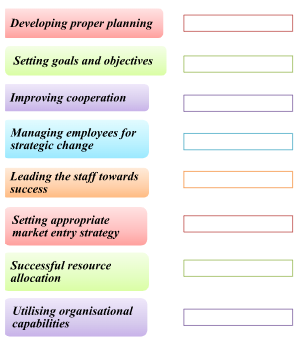
Strategic planning therefore us important for international trade where for example, the business V2: Value & Variety aims at expanding their business across the globe. It is necessary for the organisation to develop effective strategic planning for expanding their clothing business across the international market. It is useful for the brand to develop effective strategic planning after analysing the market condition, competitive power in the market and the customer’s buying behaviour in the country. Market selection is necessary where the company V2: Value & Variety can analyse the market structure of a particular country for example UK. The consumer’s behaviour regarding clothing as well as purchasing power parity of the consumers is considered in this regard for achieving the strategy of international trade. Strategic planning hereby includes market analysis and suitability of different markets where the firm is able to choose the right market where the purchasing power of the customers is high and people prefer quality and fashionable clothing products. There is also a great role of investment in the achieving the strategy of international trade where the company needs to invest huge amount for executing the plan (McDONALD et al., 2016).
Marketing planning and market entry strategy are also needs to be considered in order to achieve the target of international trade. The company V2: Value & Variety in this regard also need to consider the market entry planning through which they can establish their brand in the UK. Moreover, the marketing mix strategic planning is important in this context to promote the organisational products and attract the customers in the UK. Hereby, the strategic decision is important for the entire organisations even for the company V2: Value & Variety to develop the business and establish the brand suitably where internationalisation of the business can be possible through executing effective strategic planning successfully. Moreover the strategic decision is also beneficial for the companies to make effective planning for expanding the business, invest efficiently and improve the employee’s proficiency so that the operational activities can be handled properly (Wrenn and Mansfield, 2014). In addition to these, strategic planning is advantageous or international trade where the business can make the planning for market entry and target the customers in the market and retain for long term through developing effective marketing mix planning (Pulendran, Speed and Widing, 2015).
Evaluating the strategic issues involved in the selection, entry and development of international markets
There are several issues associated with the strategic decision, market selection, market entry strategy and international trade for which the companies face difficulties in expanding their business sustainably. the main issue in international trade is market selection where it is difficult for the firm to understand the customer’s demand in the market, industry growth and the perception of the local people in the international country, without proper analysis and evaluation, it is not possible to understand the market structure as well as internal competition in the market (Tanner and Raymond, 2015). developing the market entry strategy is also another issue where the business faces problems in identifying international business for support, it is quiet problematic during joint venture where the firms cannot rely on the international business during the international trade. Apart from that, supply chain and distribution network is another serious issue, where the firms face difficulties in identifying the suppliers and distributors in the international markets. It is also problematic to improve trust and loyalty among the suppliers and retain them for long run (McCamley and Gilmore, 2018).
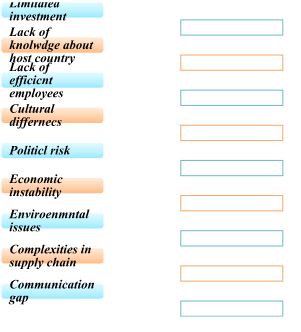
Without loyalty and building proper corporate relationship, it is difficult for the firms to retain efficient suppliers and distributors and develop effective supply chain in the new international place for internationalisation. On the other hand, another issue is lack of investment where the companies may not afford the cost of expanding the business through international trade (Johanson, and Mattsson, 2015). There needs to have high investment for internationalising the business. Additionally, lack of efficient employee is also another serious issue where the companies cannot execute the plan due to lack of proper knowledgeable employees in the international place. Without efficient staff members and managers, it is difficult for the business to expand their operational activities across the globe. cultural differences is also another serious problem in the recent era of globalisation, where market expansion is hard for the firms due to cultural differences, employee’s internal conflicts and resistance to change (West, Ford and Ibrahim, 2015). These further raise misunderstanding among the employees and this in turn affects the organisational performance in an adverse manner.
Communication gap is also another problem where the staff members and managers face difficulties in communicating with other stakeholders, customers and other local people. As the communicative patter of the international places are different, it is quiet problematic for the firms to expand their business strategically where some employees cannot interact with the local people due to language differences (Strauss and Frost, 2016). It is also hard for the companies to manage the strategic planning and execute it successfully due to non-cooperation, language gap, cultural differences and other issues related to proficiency of the employees and investment. Additionally, there exist political issues due to government rules and regulations for which the firms face problems in internationalising their business where they cannot get license within time or government support for establishing the business. Political instability is therefore one of the serious issues during internationalisation of the company.
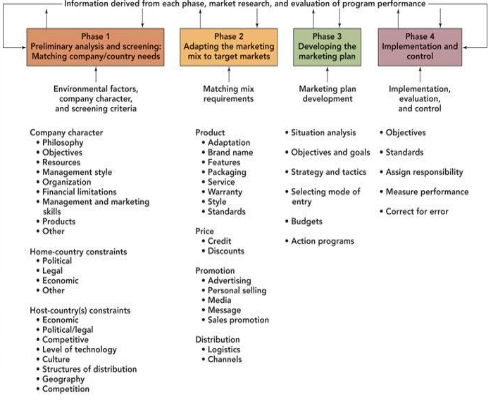
In the recent era of globalisation, the companies, government and people are concerned about the environmental issues and in this regard it is also another critical task for the business houses to manage the environmental problems and make the business sustainable. It is expensive for the firms to manage sustainability and their needs proper support from the stakeholders to establish the business by reducing environmental risks (Morschett, Schramm-Klein and Zentes, 2015). There are the major issues when the firms are trying to internationalise their business across the globe. For example, V2: Value & Variety also faces difficulties during internationalisation of the firm and the issues are such as lack of sufficient investment, communication gap, lack of promotional tactics and lack of market entry strategy and poor strategic decision.
Appraising the planning processes and methods involved in the generation of strategic choices for international marketing decisions
The organisations try to develop effective method for market entry for successful establishment of the business houses in the new international places. The planning process for the international marketing decision is important for the organisations to develop their business sustainably and establish the firm successfully in the new international places. Preliminary planning of entering into the new international market involves in depth analysis and conducting market research for identifying the characteristics of the new international markets (Felix, Rauschnabel and Hinsch, 2017).
The economic growth, social development and political stability need to be analysed in the host country and additionally, it is necessary to develop proper mission and vision of the company and reallocate the resources of the organisation for achieving success sin near future. After that, it is necessary to develop the strategic decision for market entry which involves direct export, joint venture, partnership, licensing, franchising and Greenfield investment (Rugman and Verbeke, 2017). These are the major tactics for entering into new market. for example, V2: Value & Variety also focuses on choosing the right market entry strategy so that they can expand their business across the UK and in this regard it is necessary to develop proper planning to establish the business successfully.
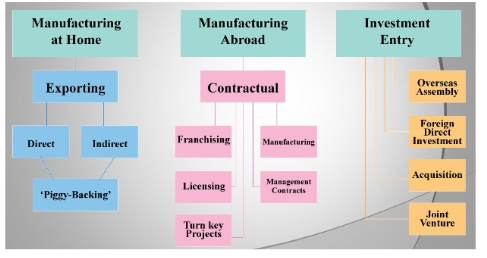
Direct export is mainly when the firm is selling their products directly in the market where the company needs to develop effective distribution network and straighten their supply chain for distributing their products as per the market needs. It is beneficial for the company to establish the business and attract more customers in the new international market. On the other hand, joint venture is also beneficial and it is an effective strategy for the new entrants to conduct an agreement with another local firm and do the business activities jointly. This is beneficial as it provides a scope to gain reputation through the local firm and retain the local customers easily. Joint venture also helps to understand the local market trend and needs and preferences of the local residents (Nagle, and Müller, 2017). On the other hand, partnership business is also another effective tactic to enter into new international market.
In addition to these, partnership business with other local firm helps the new entrant to acknowledge the local culture, business trend, market condition and social classes in the new international market. Licensing is also advantageous for entering into global market where the company needs to do agreement and purchase the licensee for doing the business sustainably in the market. Through these policies, the companies can expand their business internationally and gain competitive advantage in long run. For example, V2: Value & Variety as a clothing firm also aims at expanding their business through effective marketing strategic planning and international trade. In this regard, the company can try to select direct exporting and strengthen their supply chain and distribution network in the UK. Exporting the quality clothing and managing warehouses as well as retaining efficient suppliers and distributors are helpful strategic planning for the business to expand their operational activities across the UK. Hereby, strategic alliances joint venture and partnership as well as direct exporting planning are effective for the companies for entering into new market for establishing their business and running the operational activities successfully.
After market analysis and choosing effective market entry planning, it is necessary to develop effective marketing planning so that it is possible to promote the brand at effective market which in turn helps in expanding the business sustainably. Under the marketing planning, the companies needs to promote the products and deliver the organisational quality products and services to the customers successfully. In this regard, maintaining the quality of products is necessary where the company can offer high quality product to the customers. Moreover, price is also important where it is necessary to evaluate whether the local people can afford the price of the products or not. In this regard, brand name, services, quality of the products, durability and packaging are considered where the finished product can attract more customers in the UK market. Pricing is also another factor in the marketing mix strategy where the company tries to set affordable price so that it is easy to influence the purchase intention of the customers (Deresky, 2017). Placing the products through supply chain and distributors are also helpful for retaining more loyal customers and establishing the company successfully. Promotional activities are also necessary for the new entrant to promote the products in effective market across the UK. Sales promotion, social media advertising and personal selling are effective for the company to promote the products and attract more audiences in the market. Hereby, the marketing mix strategic planning is helpful for successful establishment of the brand in new international market.
Hereby, the above mentioned strategic decision and planning are helpful for the organisations in expanding their business across the international markets. Without proper strategic planning and implementing the planning successfully, it is not possible for the companies to expand their business and establish the firm in new market. Product management and pricing of the products are effective for the organisations to gain competitive advantage in the new international markets. Moreover, there is great role of the agents, shareholders and the distributors who are cooperating to make the business successful. For example, V2: Value & Variety aims at strengthening their supply chain and focus on direct exporting to expand their business across the UK. Moreover, the company also develops effective strategic decision to implement proper planning for market entry and promote the products through applying different promotional techniques.
Managing effectively all the elements of the marketing mix for appropriate international marketing plans
There are different elements in the marketing mix planning through which the companies can develop effective international marketing mix strategies so that it is easy to place the brand in effective market and strengthen their customer’s base.
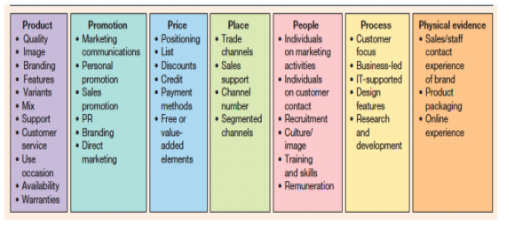
The elements of marketing mix should be included while designing the marketing mix strategic planning for the companies. In this regard, there are 7Ps under the marketing mix which are product, price, place, promotion, people, physical evidence and process through which the companies can develop effective marketing strategies top entre into new market. for product element, the company V2: Value & Variety aims at increasing product variety through diversification as well as focuses on packaging style, availability of the clothes and durability as well as quality, color and unique design of the clothes so that it is easy to target the potential buyers in the market. Through managing product quality and distributing the products safely to the customers, it is possible to target the customers and retain them for long run and in turn it is helpful to establish the brand in effective market. Additionally, pricing is also another element under marketing mix and in this regard the company focuses on setting affordable price as well as providing seasonal offers, gift vouchers and discounts to the customers which are beneficial to influence the purchase intention of the consumers.
Under the marketing, placing and process are also important elements through which the company can manage their warehouse and expert the products directly through efficient suppliers and distributors. On the other hand, the company also needs to focus on the promotional tactics through which the organisational products can be visible in the market and the customers can identify the quality products of the brand. In this regard, the social media advertisement is effective to engage the social communities and retain them for long run. this is helpful for building two way communication and social media campaign is also advantageous for the organisations to involve the customers and keep them updated with latest news regarding the products and price of the company. on the other hand, sending personalise email and direct personal selling is also beneficial where the company become successful in improving engagement with the customers and building strong relationship for long run (Tseng and Hung, 2014).
People are also another element under the marketing mix strategic planning and it is one of the main factors for achieving success. Through hiring efficient employees in the business and providing then effective training are beneficial for the companies to make the business successful where the employees can manage their responsibility and enhance organisational performance in long run. Without efficient staff members, the company cannot satisfy the customers as inefficiency of the members may lead to delivering worse services to the customers. In this regard, the company aims at managing the people in the workplace so that it is possible to retain them for long run and establish the business successfully. The company also focuses on satisfying the employees by providing them performance related pay, incentives and bonus as well as give them freedom and safe workplace for working innovatively. Encouraging the people and continuous motivation further help the companies to retain proficient staff members who are able to provide quality products and efficient services to the customers and it further provides a scope to expand the business internationally.
Conclusion
International trade and strategic decision are beneficial for the organisations to expand their business and establish the firm in the new international places. In this regard, through strategic decision and proper planning, the company try to place the brand at effective market and retain the local people by delivering quality products and efficient services. The elements of marketing mix strategic planning as well as the planning or entering in to new international market are also advantageous where the companies try to establish the firm globally. Managing product quality, people, improving process and strengthening supply chain as well as setting affordable price and promotional activities are the major elements through which the corporate firms can expand their business across the world and gain competitive advantage over other firms operating in the market.
Reference List
- Armstrong, G., Kotler, P., Harker, M. and Brennan, R., 2015. Marketing: an introduction. London: Pearson Education.
- Bartlett, C.A. and Beamish, P.W., 2018. Transnational management. London: Cambridge University Press.
- Deresky, H., 2017. International management: Managing across borders and cultures. London: Pearson Education India.
- JFelix, R., Rauschnabel, P.A. and Hinsch, C., 2017. Elements of strategic social media marketing: A holistic framework. Journal of Business Research, 70, pp.118-126.
- Johanson, J. and Mattsson, L.G., 2015. Internationalisation in industrial systems—a network approach. In Knowledge, Networks and Power (pp. 111-132). London: Palgrave Macmillan, London.
- McCamley, C. and Gilmore, A., 2018. Strategic marketing planning for heritage tourism: a conceptual model and empirical findings from two emerging heritage regions. Journal of Strategic Marketing, 26(2), pp.156-173.
- McDonald, M. and Wilson, H., 2016. The Marketing Planning Process and the Output. Marketing Plans 8e: How to Prepare Them, How to Profit from Them, pp.1-2.
- McDONALD, M.A.L.C.O.L.M., 2016. Strategic marketing planning: theory and practice. In The marketing book (pp. 108-142). London: Routledge.
- Morschett, D., Schramm-Klein, H. and Zentes, J., 2015. Strategic international management (pp. 978-3658078836). Berlin: Springer.
- Nagle, T.T. and Müller, G., 2017. The strategy and tactics of pricing: A guide to growing more profitably. London: Routledge.
- Pulendran, S., Speed, R. and Widing, R., 2015. From Rational to Interpretive Planning: Empirically Classifying Planning Styles in Australian Organisations. In Global Perspectives in Marketing for the 21st Century (pp. 487-487). Cham: Springer.
- Rugman, A. and Verbeke, A., 2017. Global corporate strategy and trade policy. London: Routledge.
- Shepherd, N.G. and Rudd, J.M., 2014. The influence of context on the strategic decision‐making process: A review of the literature. International Journal of Management Reviews, 16(3), pp.340-364.
- Strauss, J. and Frost, R.D., 2016. E-marketing: Instructor's Review Copy. Routledge.
- Tanner, J. and Raymond, M., 2015. Principles of marketing. London: University of Minnesota Libraries Publishing.
- Tomczak, T., Reinecke, S. and Kuss, A., 2018. Introduction. In Strategic Marketing (pp. 1-18). Springer Gabler, Wiesbaden.
- Tseng, S.C. and Hung, S.W., 2014. A strategic decision-making model considering the social costs of carbon dioxide emissions for sustainable supply chain management. Journal of environmental management, 133, pp.315-322.
- Vahlne, J.E. and Johanson, J., 2017. The internationalization process of the firm—a model of knowledge development and increasing foreign market commitments. In International Business (pp. 145-154). London: Routledge.
- West, D.C., Ford, J. and Ibrahim, E., 2015. Strategic marketing: creating competitive advantage. USA: Oxford University Press.
- Wrenn, B. and Mansfield, P.M., 2014. Marketing planning guide. London: Routledge.
